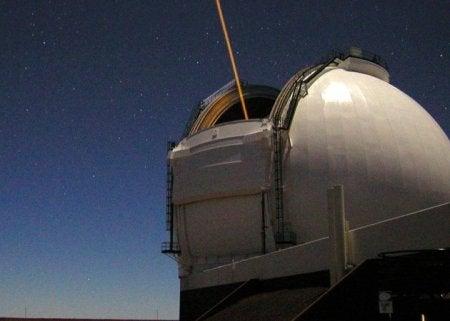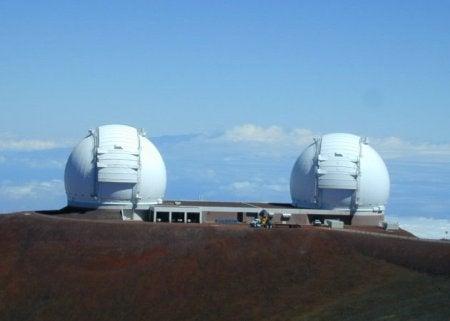Bringing Telescope Tech to X-ray Lasers
Technology that helps ground-based telescopes cut through the haze of Earth's atmosphere to get a clearer view of the heavens may also be used to collect better data at cutting-edge X-ray lasers like the Linac Coherent Light Source (LCLS) at SLAC National Accelerator Laboratory.
By Glenn Roberts Jr
Technology that helps ground-based telescopes cut through the haze of Earth's atmosphere to get a clearer view of the heavens may also be used to collect better data at cutting-edge X-ray lasers like the Linac Coherent Light Source (LCLS) at SLAC National Accelerator Laboratory.
In a paper published in the July 10 edition of Nature Communications, an international research team describes the successful test of a specialized sensor that measured distortions in the LCLS laser beam with "unprecedented accuracy." The authors propose the installation of such a sensor, which is based on the principle of grating interferometry and achieves a very high accuracy due to precisely microfabricated gratings, as part of a system designed to cancel out the laser's imperfections.
The research team, led by Christian David from the Paul Scherrer Institute in Switzerland, included scientists from SLAC and the European X-ray Free Electron Laser (EXFEL) project.
"From a software and controls point of view, you can actually apply the same methods used to improve the vision of telescopes such as those at W.M. Keck Observatory in Hawaii," said Jacek Krzywinski, an X-ray optics specialist at SLAC who participated in the experiments.
The dual telescopes at Keck are equipped with adaptive optics systems that compensate, on the fly, for the Earth's atmospheric turbulence to produce clearer space images. Their systems rely on sensors that supply information about atmospheric distortions and control "deformable" mirrors – systems of tiny mirrors that automatically make split-second adjustments to cancel out these atmospheric distortions.
While adaptive optics systems fitted to telescopes provide for continual adjustments based on monitoring of atmospheric distortions, "At an X-ray free electron laser, every shot differs slightly from the next," said Simon Rutishauser, a graduate student at the Paul Sherrer Institute and lead author of the paper. So an adaptive optics system for an X-ray laser could perhaps be used to adjust the mirrors prior to an experiment, and then to record the beam's distortions for each pulse during the experiment.
If the sensor is coupled with an auto-adjusting mirror, that could improve focusing and performance of the beam, he added.
In the case of X-ray lasers, scientists could divert a portion of the laser's energy to a sensor with "negligible disturbance to the main beam" and without destroying the sensor in the process, Krzywinski said.
The sensor could be used to automatically steer an adjustable mirror, to retool or make adjustments to standard components of the laser, or to compensate for the laser distortions in the collected data and in some cases discard selected data when the laser distortions are too great. Just as scientists were able to measure and compensate for flaws in the mirror of the Hubble Space Telescope, Krzywinski noted, it's possible to design away the distortions in X-ray laser optics.
The uniformity of laser pulses is important to many experiments at LCLS, and reducing beam distortions can provide higher-quality data. Laser optics, including mirrors, have inherent flaws at the nanoscale, which can introduce distortions that vary based on the beam settings.
While implementation of adaptive optics technology at the LCLS would still require a substantial R&D effort, researchers say it is both plausible and desirable. In the meantime, the wave-front information recorded by the sensor for each single X-ray pulse can already be leveraged to improve the data quality of experiments performed without adaptive optics.

